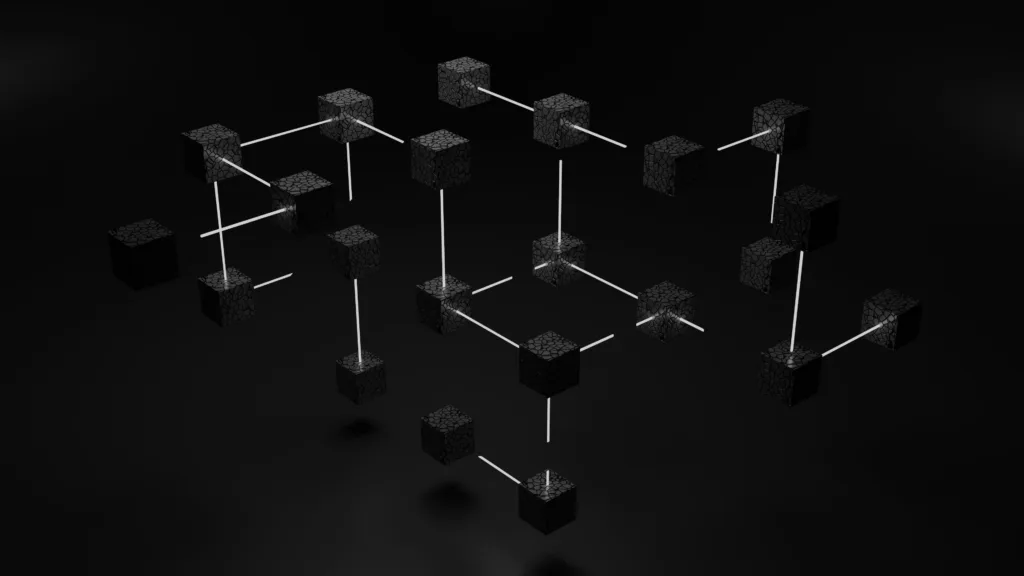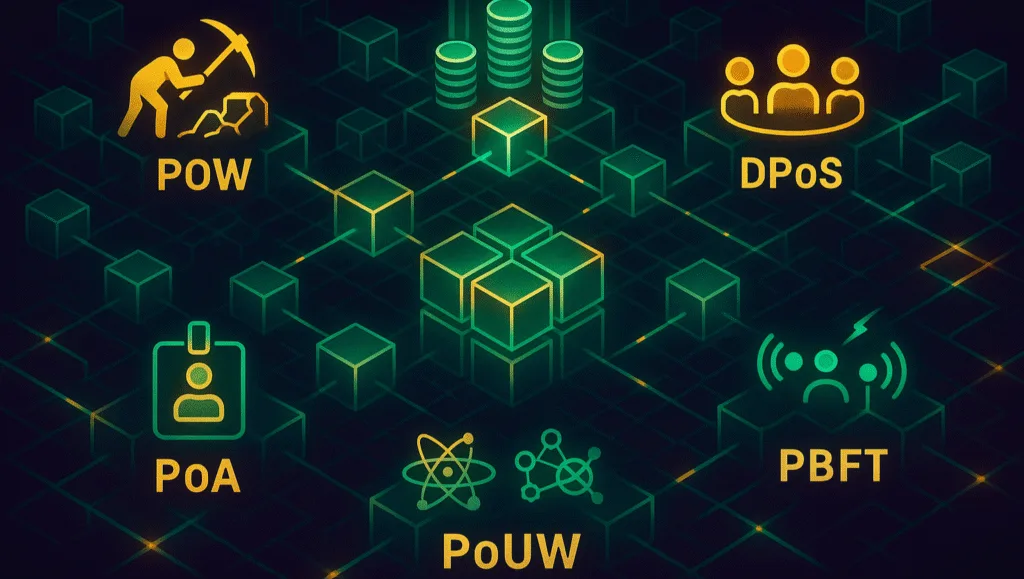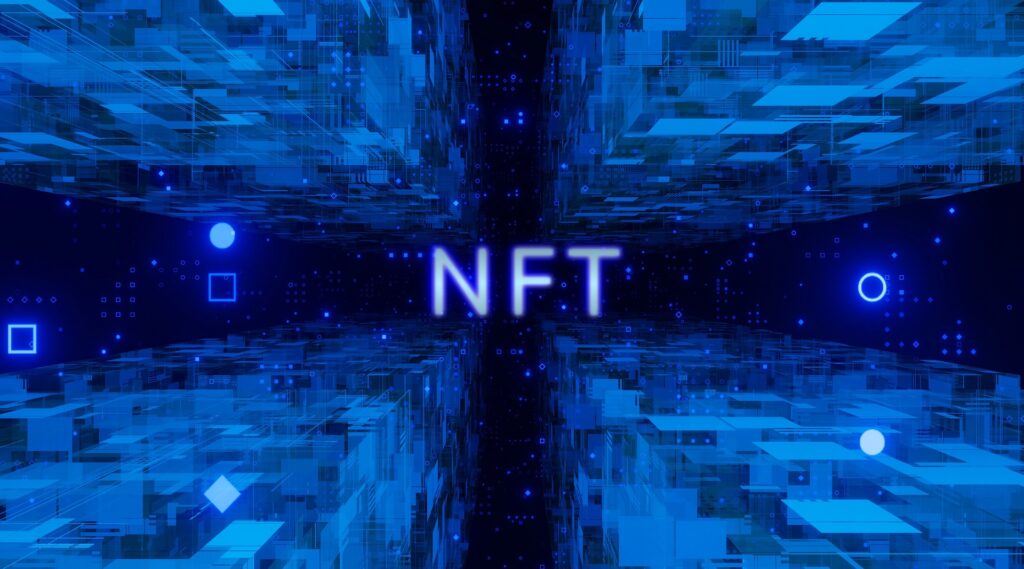At the heart of every blockchain is a simple but critical question: how do thousands of nodes agree on a single version of truth without a central authority? The answer lies in consensus mechanisms. These are the protocols that keep blockchains secure, decentralized, and functioning smoothly.
If you’re looking to understand how consensus works, why it matters, and what different models exist, you’re in the right place.
What is a Consensus Mechanism?
A consensus mechanism is the method a blockchain uses to validate transactions and agree on the state of the network. Since there’s no central authority, nodes must follow a shared rulebook to decide which blocks are legitimate.
Without consensus, blockchains would fall apart. Transactions could be duplicated, malicious actors could rewrite history, and trust in the system would vanish.
Why Blockchain Consensus Mechanisms matter?
Consensus is the foundation of blockchain. Here’s why it’s essential:
- Security: Prevents double-spending and fraud.
- Decentralization: Ensures no single party controls the network.
- Trustless interaction: People can transact without relying on intermediaries.
- Scalability and performance: Different mechanisms balance speed and decentralization in unique ways.
In short, consensus isn’t just a technical detail. It’s what makes blockchain possible.

The main types of Blockchain Consensus Mechanisms
There are many variations, but most fall into a few major categories. Let’s break them down.
1. Proof of Work (PoW)
- Definition: Miners solve complex puzzles to validate blocks.
- Pros: Extremely secure, proven over time.
- Cons: Energy-intensive, slower transactions.
- Examples: Bitcoin, Litecoin.
2. Proof of Stake (PoS)
- Definition: Validators put their coins at stake to confirm blocks.
- Pros: Energy efficient, scalable, more environmentally friendly.
- Cons: Wealthier participants have more influence.
- Examples: Ethereum, Cardano, Solana.
3. Delegated Proof of Stake (DPoS)
- Definition: Token holders vote for a small group of delegates who validate transactions.
- Pros: Very fast, scalable, community-driven governance.
- Cons: Higher centralization risk.
- Examples: EOS, TRON, Steem.
4. Proof of Authority (PoA)
- Definition: Validators are pre-approved, usually known entities.
- Pros: High speed, efficient, good for private or enterprise blockchains.
- Cons: Limited decentralization, relies on trusted parties.
- Examples: VeChain, many enterprise blockchains.
5. Proof of Useful Work (PoUW)
- Definition: Mining power is directed toward solving real-world problems, like AI training or scientific simulations.
- Pros: Energy creates external value, greener narrative.
- Cons: Complex to implement, still experimental.
- Examples: Flux, Bittensor.
6. Practical Byzantine Fault Tolerance (PBFT)
- Definition: Nodes reach agreement through rounds of voting, even with some malicious actors.
- Pros: Low latency, fast confirmations.
- Cons: Works best with smaller validator groups, not ideal for very large networks.
- Examples: Hyperledger Fabric, Tendermint (Cosmos).
Comparing Consensus Mechanisms
| Mechanism | Security Level | Speed | Decentralization | Energy Use | Examples |
|---|---|---|---|---|---|
| Proof of Work (PoW) | Very High | Low | High | Very High | Bitcoin |
| Proof of Stake (PoS) | High | High | Medium–High | Low | Ethereum |
| Delegated PoS (DPoS) | Medium–High | Very High | Medium | Low | EOS, TRON |
| Proof of Authority (PoA) | Medium | Very High | Low | Low | VeChain |
| Proof of Useful Work (PoUW) | High | Medium | Medium | Medium | Flux |
| PBFT | High | High | Medium | Low | Hyperledger |
The trade-offs
Every consensus mechanism balances three things, often called the blockchain trilemma:
- Security: How resistant is the network to attacks?
- Scalability: How many transactions can it handle per second?
- Decentralization: How distributed is power across participants?
No model gets all three perfectly. PoW maximizes security and decentralization but sacrifices scalability. DPoS maximizes scalability but risks centralization. PoS tries to balance all three but is still evolving.

The future of consensus
Blockchain isn’t static. Hybrid models are emerging, combining the strengths of different approaches. For example:
- Ethereum’s PoS with sharding for scalability.
- Cosmos and Polkadot exploring inter-chain consensus.
- PoUW projects trying to tie blockchain security to real-world applications.
Consensus mechanisms will keep evolving as blockchains expand beyond finance into areas like identity, healthcare, gaming, and governance.
Frequently Asked Questions
PoW is still considered the most secure because of its high cost of attack, but it’s also the least efficient.
PoS and DPoS are better suited for scalability, though they trade off some decentralization.
Yes. Ethereum’s move from PoW to PoS in 2022 is the most famous example.
No. Private and enterprise blockchains also use them, often favoring PoA or PBFT for speed and control.
Consensus mechanisms are the beating heart of blockchain. They’re what allow strangers across the globe to trust the same ledger without ever meeting. Each mechanism comes with strengths and weaknesses, and no single model fits every use case.
The key is understanding the trade-offs. If security is your top priority, PoW remains unmatched. If scalability matters more, PoS or DPoS might be a better fit. And if real-world utility is the goal, PoUW could reshape how we think about blockchain entirely.
The bottom line: consensus isn’t just a technical detail. It’s the reason blockchain exists, and the way it evolves will shape the future of decentralized technology.
With over five years of experience in the tech industry, Kazim excels at simplifying complex topics, making them accessible to tech enthusiasts and general readers alike.
He has contributed to several renowned publications worldwide, including WindowsReport and Allthings.how, bringing insightful coverage of key developments in the field.
When he’s not writing, you’ll find Kazim planning weekend getaways or diving into tech verticals beyond his expertise.




